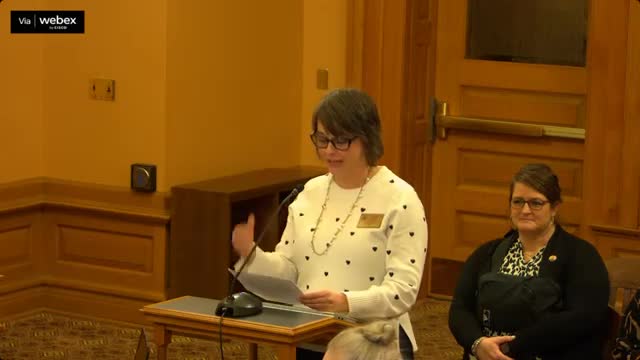Kansas prioritizes cardiac emergency response plans in schools to save children's lives
January 22, 2025 | Committee on Education, Standing, HOUSE OF REPRESENTATIVES, Committees, Legislative, Kansas
This article was created by AI summarizing key points discussed. AI makes mistakes, so for full details and context, please refer to the video of the full meeting. Please report any errors so we can fix them. Report an error »

The Kansas House Committee on Education meeting on January 22, 2025, highlighted a significant initiative aimed at enhancing cardiac emergency preparedness in schools. The discussion centered around the implementation of Cardiac Emergency Response Plans (CERP), which are designed to improve survival rates for children experiencing cardiac arrest during school events.
A key statistic shared during the meeting revealed that sports account for 40% of cardiac events among the 23,000 children referenced. Immediate life-saving care, such as CPR and the use of Automated External Defibrillators (AEDs), can dramatically increase survival chances—doubling with CPR and tripling when an AED is available. In schools equipped with AEDs, approximately 70% of children survive cardiac arrest, a rate seven times higher than the overall survival rate for children.
The focus on schools as the initial target for these plans stems from the high number of community members present during school activities and the critical need for timely emergency responses, especially in rural areas where delays can be life-threatening. The Kansas Department of Health and Environment (KDHE) has taken a proactive approach by utilizing existing staff to develop and share implementation guides for these standards, which are now being adopted by other states.
The committee underscored the importance of integrating cardiac emergency drills into the existing framework of fire, tornado, and active shooter drills already practiced in schools. This initiative aims to foster a culture of preparedness and create a "nation of lifesavers," extending beyond schools to include businesses and communities.
As the implementation of these plans progresses, the committee expressed optimism about the potential impact on student safety and community health, reinforcing the necessity of having robust emergency response strategies in place.
A key statistic shared during the meeting revealed that sports account for 40% of cardiac events among the 23,000 children referenced. Immediate life-saving care, such as CPR and the use of Automated External Defibrillators (AEDs), can dramatically increase survival chances—doubling with CPR and tripling when an AED is available. In schools equipped with AEDs, approximately 70% of children survive cardiac arrest, a rate seven times higher than the overall survival rate for children.
The focus on schools as the initial target for these plans stems from the high number of community members present during school activities and the critical need for timely emergency responses, especially in rural areas where delays can be life-threatening. The Kansas Department of Health and Environment (KDHE) has taken a proactive approach by utilizing existing staff to develop and share implementation guides for these standards, which are now being adopted by other states.
The committee underscored the importance of integrating cardiac emergency drills into the existing framework of fire, tornado, and active shooter drills already practiced in schools. This initiative aims to foster a culture of preparedness and create a "nation of lifesavers," extending beyond schools to include businesses and communities.
As the implementation of these plans progresses, the committee expressed optimism about the potential impact on student safety and community health, reinforcing the necessity of having robust emergency response strategies in place.
View full meeting
This article is based on a recent meeting—watch the full video and explore the complete transcript for deeper insights into the discussion.
View full meeting
